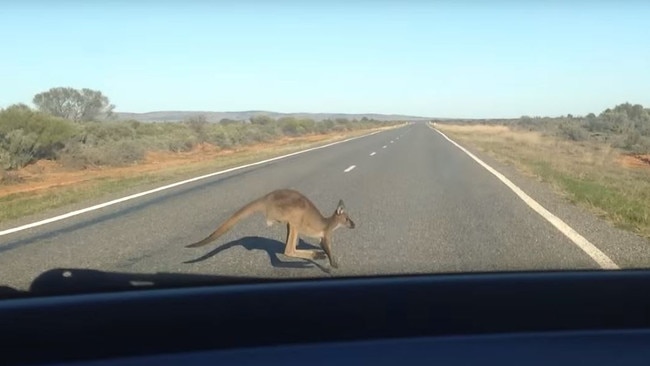Heathcote tops list of Victoria’s worst areas for wildlife collisions
Almost a quarter of all Australia’s native animal road accidents happen in Victoria. And this hot spot for wildlife crashes has emerged as the worst in the state.
VIC News
Don't miss out on the headlines from VIC News. Followed categories will be added to My News.
Collisions between animals and cars are more common in Heathcote than any other part of the state, with motorists have urged to slow down as crashes surge in winter.
Analysis by AAMI of insurance claims made over 12 months has revealed more than 6000 wildlife crashes were recorded in Victoria, more than a quarter of Australia’s total.
Kangaroos made up 84 per cent of accidents and collisions in the state were most frequent in Heathcote, Gisborne, Wallan, Sunbury and Woodend.
AAMI motor claims head Anna Cartwright said these types of crashes surged by as much as 15 per cent between May and August.
“Now is the time for drivers to keep their eyes peeled for wildlife crossing roads, and be extra vigilant especially at dawn and dusk when visibility can be difficult, and nocturnal animals are more active,” she said.
“It is an important message on the back of a bushfire season not to further impact our vulnerable wildlife that have had their habitats destroyed.

Ms Cartwright said the crash hot spots were areas on Melbourne’s fringe or regional towns.
“They are places where you still have wildlife activity but the roads are reasonably populated with motorists,” she said.
“Out-of-towners also contribute to the statistics because they are not as familiar with the roads.”
Friday was the worst day of the week for animal crashes while more accidents happened between 4pm and 8pm than any other time.
Wildlife Information Rescue and Education Service campaign manager Kristie Newton said winter meant more activity from nocturnal animals near roads.
“As native animals come closer to the road to feed drivers should be extra vigilant especially near water sources like creeks or gullies where thick fog can occur and reduce drivers’ visibility,” she said.
“If you’ve been involved in an accident with wildlife, please pull over where it is safe to check whether the animal is injured.
“For your own safety never approach an adult kangaroo, even if it’s injured.
“If it has passed away, check its pouch as young animals will not survive long in these
conditions.
“Keep any distressed animals warm, ideally wrapped in a blanket, jumper or cardboard box, and keep quiet until you can call for help.”
